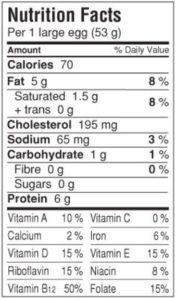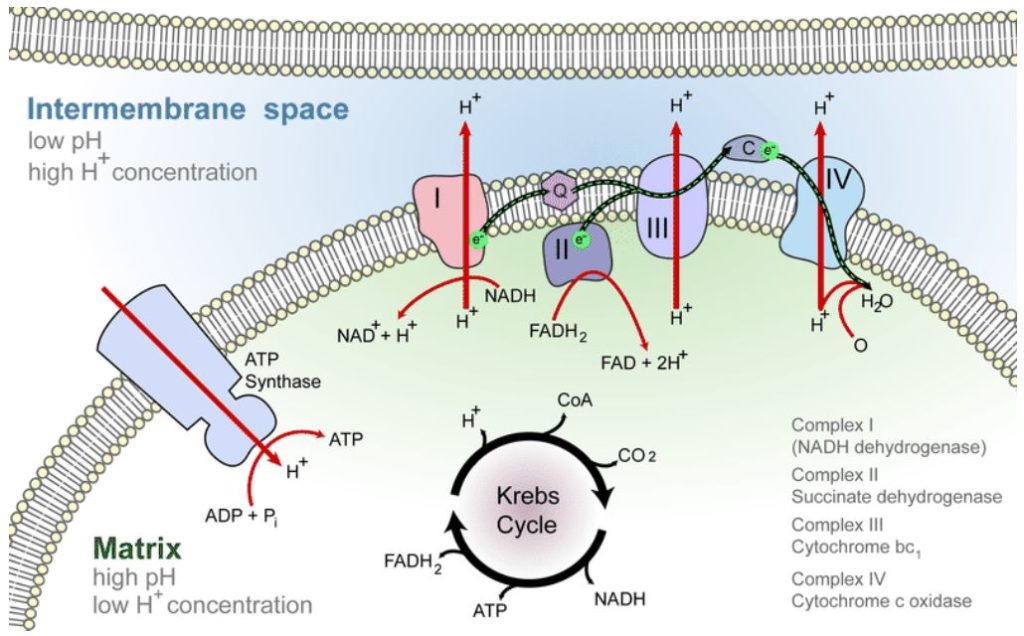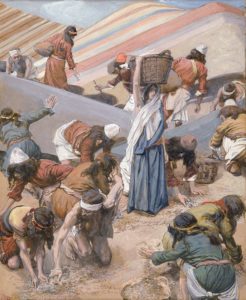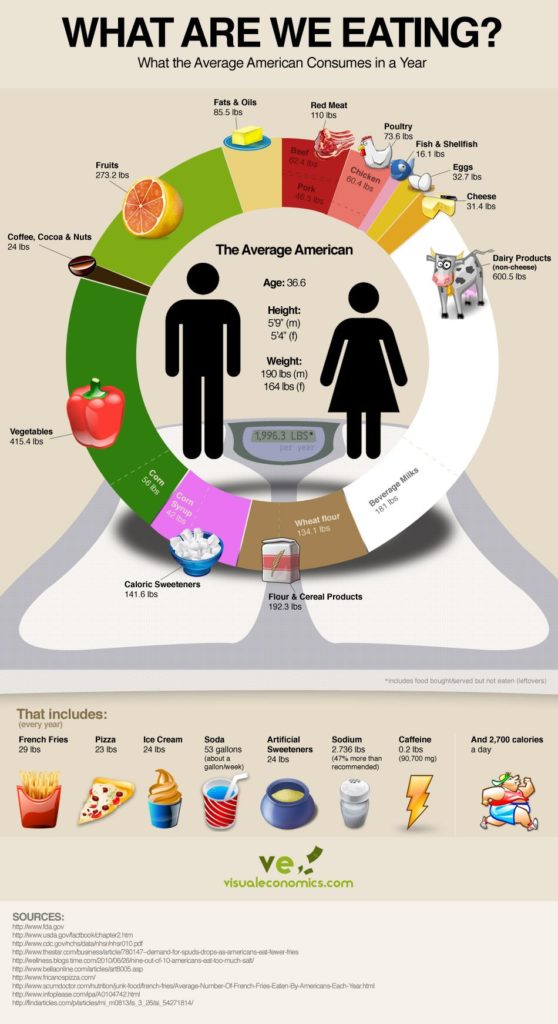In this week’s parasha, Beha’alotcha, we read how the Israelites had become fed up (literally) with eating manna. The Torah reminds us how the people would collect their share of manna every day (Numbers 11:8): “The people walked about and gathered it. Then they ground it in a mill or crushed it in a mortar, cooked it in a pot and made it into cakes. It had a taste like the taste of oil cake.” Although it had its own innate taste, our Sages teach that in reality the manna would transform into whatever the person felt like eating! Still, the Israelites complained (Numbers 11:6):
We remember the fish that we ate in Egypt for free; the cucumbers, the watermelons, the leeks, the onions, and the garlic. But now, our souls are dried out, for there is nothing at all except the manna before our eyes.
Rashi comments on this verse by citing a Midrash that manna would turn into anything except fish, cucumbers, watermelons, leeks, onions and garlic. This is why the people complained about those foods in particular. Why were these foods excluded? “Because they are harmful for nursing mothers” and their babies. With regards to leeks, onions, and garlic it is understandable, since they have a strong, sharp taste. It is harder to identify why fish, cucumbers, and watermelons are harmful. (Mercury levels? High sugar content?)
An alternate explanation is that the people missed going to the bathroom. Manna was perfectly nutritious and left absolutely no waste. The Israelites experienced a miracle each day in the Wilderness in that they did not have to defecate. When they said “our souls are dried out”, Chizkuni (Rabbi Hezekiah ben Manoach, c. 1250-1310) comments that they meant something was wrong with their bodies—they couldn’t understand how they were eating and eating and no waste came out!
Another explanation is that the people complained because they missed the texture and appearance of the foods, since manna was always cooked into monotonous cakes. Every time the Israelites looked at manna, they saw the same “crystalline” substance (Numbers 11:7). From the description given, it appears that raw manna was a crunchy, frosty substance that was then ground and creamed into a runny, transparent fluid with the consistency of oil or honey. It might be somewhat reminiscent of egg whites. In fact, when the Sages define the amount of manna each person gathered daily in the Wilderness, they set it as the equivalent of 43 eggs:
The Torah tells us that each person was allotted an omer of manna per day (Exodus 16:16), and that an omer is equivalent to a tenth of an ephah (Exodus 16:36). An ephah, meanwhile, is equal to 72 log, and one log is equal to 6 beitzah, eggs. Putting it together, an omer is 7.2 log, which is 43.2 eggs. Finally, a beitzah is equal to two (some say three) k’zayit, olive-servings. It is generally agreed upon halachically that an “olive” measure is about 30 grams, although historically there were those that defined it closer to 20 grams. To put things in perspective, an average olive today is 5-10 grams. Whatever the case, a beitzah is about 60 grams, which is in line with modern average masses for eggs. (A jumbo-sized egg is closer to 80 grams, while a medium is about 50 grams. Most people buy large or extra-large eggs, which are between 55 and 65 grams.)
We see from this that an Israelite collected something like two and a half kilograms of manna every day (43.2 eggs × 60 grams each = 2592 grams). This is in line with the average mass of food a modern person eats daily, which is nearly 2.5 kilograms. At the same time, a person needs about 2500-3000 calories per day. If we continue to use the egg as a standard measure for manna, and that a typical large egg has about 70 calories, the average Israelite consumed 3000 calories per day (43.2 eggs × 70 calories each = 3024 calories). This is an excellent amount, especially for an active person such as one taking long walks through the Wilderness.
Eggs and Manna
 That the Sages define the amount of manna in terms of eggs is no coincidence, for they also state that “an egg is nutritionally superior to the same quantity of any other kind of food” (Berakhot 44b). Eggs are an absolute superfood, and worthy of being compared to the perfectly-nutritious manna. Eggs are high in protein and contain healthy omega-3 fatty acids. They are high in B vitamins, as well as vitamins A, D, E (in the yolk), and iron.
That the Sages define the amount of manna in terms of eggs is no coincidence, for they also state that “an egg is nutritionally superior to the same quantity of any other kind of food” (Berakhot 44b). Eggs are an absolute superfood, and worthy of being compared to the perfectly-nutritious manna. Eggs are high in protein and contain healthy omega-3 fatty acids. They are high in B vitamins, as well as vitamins A, D, E (in the yolk), and iron.
Eggs also contain lesser-known nutrients. One of these is a class of compounds called betaines. Betaines are biological osmolytes, meaning that they maintain a cell’s osmotic (water pressure) balance and integrity, keeping the cell from dehydrating and from falling apart. Another key nutrient in eggs is choline which has a plethora of functions in the body including building cell membranes, neural signalling, and in metabolism. It is especially important for pregnant and nursing women (low choline levels are linked to neural tube defects and poor neurological development), which takes us back to that statement of the Sages about manna and nursing women.
Eggs also have good amounts of phosphorus, zinc, and selenium. The latter is especially noteworthy because a single egg has 22% of a person’s recommended daily intake of selenium, a trace mineral necessary for proper functioning of the thyroid gland, and for generating antioxidant enzymes.
[While we’ve all heard about the importance of antioxidants, it’s also important to know how they work: In the process of generating energy, our body uses oxygen and combines it with free hydrogen ions to produce water. The oxygen we breathe is actually a molecule of two oxygen atoms bonded together, sharing a pair of electrons. Sometimes, when the molecule splits one oxygen will remain unbonded and become a free radical, an atom that is missing one electron (and is quite upset about this). Radicals will attack other molecules to get an electron, and can therefore damage vital cellular components, including DNA. An oxygen free radical is also known as an oxidant, hence the need for anti-oxidants to neutralize them. There are other free radical particles, too, aside from oxidants, and reactive oxygen particles are also generated in other cellular processes outside of energy production. Selenium helps certain antioxidant enzymes that neutralize those other reactive oxygen particles, especially hydrogen peroxide.]

The Electron Transport Chain within the mitochondria of our cells produces most of our energy. Water is formed at Complex IV using the oxygen we breathe, and energy (in the form of ATP) is produced at the Synthase pump. (Credit: Mariana Ruiz Villarreal/CK-12)
Cholesterol and the Talmud
Of course, one cannot talk about eggs without discussing cholesterol. While eggs are high in cholesterol, it isn’t necessarily a bad thing. Studies show that there is little connection between eggs and heart disease, and that 70% of people who eat lots of cholesterol are “hyperresponders” anyway—enjoying little or no effect on their blood cholesterol levels. Long ago, the Talmud (Chullin 59a) already discussed eggs and heart disease:
Rav Yosef says: One who eats sixteen eggs, and forty nuts, and seven fruits of the caper bush, and he drinks a quarter-log of honey in the season of Tammuz [summer], all on an empty [stomach], his heartstrings are uprooted.
It is very unlikely that anyone today would eat sixteen eggs in one sitting, on an empty stomach. A couple of eggs a day is probably not an issue for most people. In fact, until recently the world’s oldest woman was Emma Morano who, at the age of 116, shared her secret to a long life: “I eat two eggs a day, and that’s it. And cookies.” Morano started eating eggs daily when she was twenty years old on the advice of a doctor after being diagnosed with anemia. She never stopped.
In short, eggs are a nutritious superfood that, not coincidentally, our Sages connected to the perfectly-wholesome manna. Manna, of course, had far more going for it than a chicken egg, and came with no health concerns whatsoever. The Talmud (Chagigah 12b) states that manna was prepared up in the Heavens (specifically in the third of the seven levels, called Shechakim). Intriguingly, the Talmud does not say this in the past tense, but in the present: manna continues to be prepared there for the righteous to consume in Heaven! For us here on Earth, we shall have to settle for eggs—preferably from organically-fed and happy free-range chickens.


